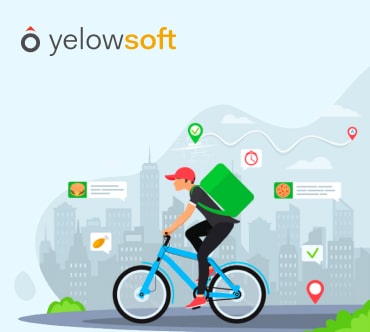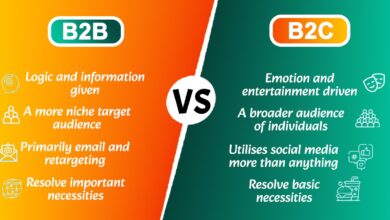
The rising on-demand economy has shaken almost every sector in recent years, including the food business. With the COVID-19 epidemic, on-demand delivery apps for food are seeing a significant increase in daily installations and have become a global craze. According to research, the number of signups for Uber Eats’ food delivery service has increased by 30% in the previous three months. As a result of this rapid expansion, entrepreneurs are making smart investments in the food ordering sector and favoring on-demand meal delivery app development.
Another feature of this sector is perennial, and it will continue to produce earnings indefinitely. However, before stepping into the online food delivery industry, it is critical to grasp how to implement on-demand food delivery and app models. So, let us go into the subject to provide you with a deeper understanding of online meal ordering business strategies and talk about top trends and predictions of the food industry.
Different types of Food Delivery App Models
The online food sector has surpassed traditional food companies by using a full-cycle approach to a dining experience that includes three key components: ordering, cooking, and delivery.
The sector follows one of three basic meal delivery business models. We will go over each on-demand food delivery app model concept individually.
Model of Order Only
This meal-delivery business model is followed by first-generation restaurant ordering services such as Just Eat and Grub Hub. The service provider operates as a conduit between local eateries and clients through its web portal. It will aid in linking clients with eateries to place and fulfil orders. With this meal delivery business strategy, businesses may establish strong brand visibility with a more extensive audience base. Furthermore, it enables clients to place an order from the finest restaurants effortlessly.
The technology used by businesses to send order information to food chains is as follows:
- Customers place orders using the company’s apps or website.
- Orders are deliver to restaurants by email, fax, or cell phone alerts.
- The eateries will acknowledge that the order requests have been approved and send out a message to the consumers.
- Businesses may also begin sending orders through a native mobile phone or online apps.
- Orders are sometimes printed to the cooks using a POS system.
- The delivery executive will deliver the order to the customer’s location. To minimise any delivery misunderstanding, the firm will supply the delivery guy with the customer’s mobile number.
Model of Order and Delivery
This is the most prevalent meal delivery business model for most reputable firms that manage consumers, restaurants, and delivery. Many restaurants typically work with this marketplace because it saves them time handling the delivery duty. UberEATS is one of the worldwide meal delivery applications implementing this strategy. However, this meal delivery business strategy necessitates more resources than the first. Let’s go into the specifics.
- Restaurants can quickly sign up for your online meal delivery service.
- But on the other hand, clients may use your gateway to place orders from their favourite restaurant.
- The restaurant owner will get order requests via in-app alerts or the website.
- Finally, clients will pay for their orders offline or online, depending on their preference.
- The delivering executive in the closest area will get the push notifications and deliver the order to the customer’s doorstep.
- The framework will impose a delivery charge based on the distance travelled.
- Customers can also specify delivery instructions such as “no contact delivery,” “do not ring the doorbell,” etc.
Model of the Aggregator
The following business model for start-ups differs from the previous two. This approach is intended for people who intend to develop a comprehensive individual meal delivery business strategy. Rocket Food and Eat Purely are two worldwide players that follow this business strategy. In this arrangement, the proprietor will be entirely responsible for the whole business, from cooking to delivery. You can either employ a chef to create the dishes or prepare them yourself. However, most of the brands work with experienced chefs to preserve food quality.
The order allocation for this business model works in one of two ways:
- There would be no need for administration in the first plan, which means that when an order is plac, it will be forwarded to the closest delivery executive.
- You’ll need to engage an administrator to handle order allocation for the second approach. When a consumer
- puts an order, it is sent to the admin panel, where it is assign to the closest delivery boy.
- For delivering the food:
- The company’s appointed delivery professionals will carry the goods.
- Depending on the customer’s choices, there might be immediate or planned delivery.
- Every delivery guy will be assigned several orders to deliver to clients’ doorsteps.
Reasons why you must Develop A Food Delivery App
Rise of Cloud Kitchens
Developing a food delivery software can be used by businesses who want to build up virtual eateries or commissary kitchens. It connects food entrepreneurs with professional kitchens to build their virtual eateries. Previously, conventional kitchens ignored the notion of cloud kitchens; however, with the emergence of online food tech innovation, food businesses are now solely focus on supporting flawless online delivery services.
A rise in the demand for food deliveries
We are all aware that the COVID-19 epidemic is getting more prevalent. Every person’s way of life is becoming more computerised. People rely on web services for their daily needs. The food business experienced a surge in demand for online meal delivery services. Food entrepreneurs must cater to more people than ever before. If you work in the food sector, now is the time to have your food-delivery applications and meet the expanding market need.
Food delivery applications can thrive Future
The only constant changes! It is reasonable to anticipate changes in the technology arena and the food industry. According to current industry trends, the food industry will mature with an average growth rate of close to 3.5 percent in the following year. This is how the internet meal delivery sector will develop exponentially in the Future. As a result, creating a strong app will assist your food business in the Future.
Increase user and vendor transparency
On-demand delivery applications have already grown in size and popularity. The adoption of technology is helping to develop the food business. Both users and companies benefit from the food app’s openness.
Increase repeat visits
Every business owner aspires to keep their consumers for an extended period. The first step in increasing return visits is to create a customised on-demand application. Businesses must invest in-home delivery applications to attract more clients and build great relationships.
Takeaways
Because many offline companies have already closed owing to the COVID 19 problem. Developing an improved food delivery network would be advantageous both now and in the future. You may choose any on-demand food delivery business model based on your needs and preferences. Each Online food delivery business model has pros and downsides. However, do your homework on your start-up and its rivals.




